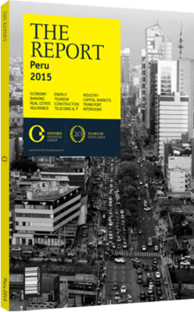Carlos González-Taboada, CEO, Scotiabank Peru: Interview

Interview: Carlos González-Taboada
Will mortgage loans continue to grow in Peru?
CARLOS GONZÁLEZ-TABOADA: In line with the rise of the middle class and higher average salaries, mortgage loan activity has increased exponentially since 2009, at an annual average rate of around 20%. However, this is not sustainable for the long term, and growth is likely to settle to around 10%. Additionally, investment in real estate development has spiked up, driven by greater and more sophisticated demand.
All this being said, the volume of mortgage credit remains very low, with fewer than 200,000 mortgages in a country of over 30m people. This indicates that the required cultural change has yet to take place, as Peruvians continue to opt to satisfy their housing needs by paying through their savings rather than loans.
The increasing preference for loans in local currency rather than in dollars is a very positive development, as it reduces potential vulnerability to exchange risks for both borrowers and the market. A mortgage may not be the most efficient formalisation tool in and of itself, but bank credit in general presents interesting opportunities, as shown by the large number of credit card holders and microbusinesses that operate through the financial system.
Are banks too conservative to penetrate the small and medium-sized enterprise (SME) market?
GONZÁLEZ-TABOADA:In Peru’s case, we need to differentiate between SMEs and microbusinesses. Smaller companies account for a larger percentage of the economy, and this has helped develop a very strong microcredit industry in the country.
Informality is always measured by estimations, which put the number of microbusinesses at around 3m – of these, 1.4m have registered with the tax agency, and the financial system is granting loans to 1.2m. This means that 36% use banks and around 42% are registered, so informality is actually below current estimates. However, there is another way to analyse this data, as only 250,000 of the 3m microbusinesses have legally registered employees. The banking sector will continue to support and finance SMEs, which, combined with certain potential new products, will help to reduce the level of informality in Peru in the medium term.
Does the banking sector have the financial muscle to fund major infrastructure projects?
GONZÁLEZ-TABOADA: There have been important tenders since 2012, worth up to $11bn, for projects set to help reduce the infrastructure deficit. This figure is not beyond the capacity of the local banking system, which currently manages $65bn.
We should take into consideration the growth of the capital market, with a potential $40bn held by private pension funds that are very interested in investing in long-term projects. The issue lies more in being able to combine capacities to address financing needs.
Many infrastructure projects are in the range of a few hundred million dollars, which local financing institutions can easily handle. Projects that are above a billion dollars, however, will require a combination of local financing and international investors, a type of financing which is now more easily accessible thanks to the country’s improved risk ratings. The system as a whole is both solid and deep enough to address the country’s $90bn infrastructure deficit.
Is indebtedness a big problem in the country?
GONZÁLEZ-TABOADA: The average rate of non-performing loans in Peru is 2.4%, and although this has increased in the past couple of years, the figure remains very low in comparison to other countries in the region. The market currently manages around 6m credit cards and 2m personal loans, which makes for 8m clients that owe a combined total of $9bn. This per capita average is very low, not only for Latin America, but also more widely. Credit penetration has been a major factor in improving purchasing power, but there is still much work to be completed – the active economic population of 16m means that only half currently have loans.
You have reached the limit of premium articles you can view for free.
Choose from the options below to purchase print or digital editions of our Reports. You can also purchase a website subscription giving you unlimited access to all of our Reports online for 12 months.
If you have already purchased this Report or have a website subscription, please login to continue.

